Converting a GeoJSON to Uber's h3 is quite simple.
Attaching a sample code snippet and GeoJSON used below:
GeoJSON:
{"type": "FeatureCollection","features": [{"type": "Feature","properties": {},"geometry": {"type": "Polygon", "coordinates": [[[77.5250244140625,13.00857192009273],[77.51266479492188,12.971103764892034],[77.52777099609375,12.94099133483504],[77.57171630859375,12.907528813968185],[77.60604858398438,12.914890953258695],[77.662353515625,12.928276105253065],[77.69874572753906,12.961066692801282],[77.65823364257812,13.00990996390651],[77.58956909179688,13.04469656691112],[77.53944396972656,13.038007215169166],[77.5250244140625,13.00857192009273]]]}}]}
Code:
from h3converter import h3converter
geojson_raw = open("sampleJson.geojson",)
geojson = json.load(geojson_raw)
h3_list = []
h3_resolution = 7
for feature in geojson["features"]:
feature_h3 = h3converter.polyfill(feature["geometry"], h3_resolution)
h3_list.append(feature_h3)
print("H3's created => ", len(feature_h3))
print(h3_list)
Response:
[{'8761892edffffff', '8760145b0ffffff', '87618925effffff', '87618925bffffff', '87618924affffff', '876189256ffffff', '8760145b1ffffff', '8761892eaffffff', '8761892eeffffff', '876189253ffffff', '876189259ffffff', '8760145b2ffffff', '876014586ffffff', '8760145b4ffffff', '8761892e1ffffff', '8760145a2ffffff', '8761892ecffffff', '876189251ffffff', '8760145a4ffffff', '8761892e5ffffff', '87618925affffff', '8761892e9ffffff', '8761892cdffffff', '876189250ffffff', '87618925dffffff', '8760145b6ffffff', '876014595ffffff', '876189252ffffff', '8761892ebffffff', '8760145a3ffffff', '8760145a6ffffff', '876014584ffffff', '876189258ffffff', '8760145b5ffffff', '8760145b3ffffff', '876014594ffffff', '8761892c9ffffff', '87618925cffffff', '8760145a0ffffff', '8761892e8ffffff'}]
Package used: https://pypi.org/project/h3converter/
You could use the above package to convert h3 to GeoJSON as well.

